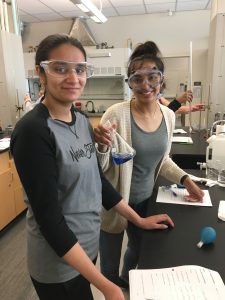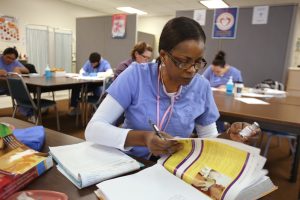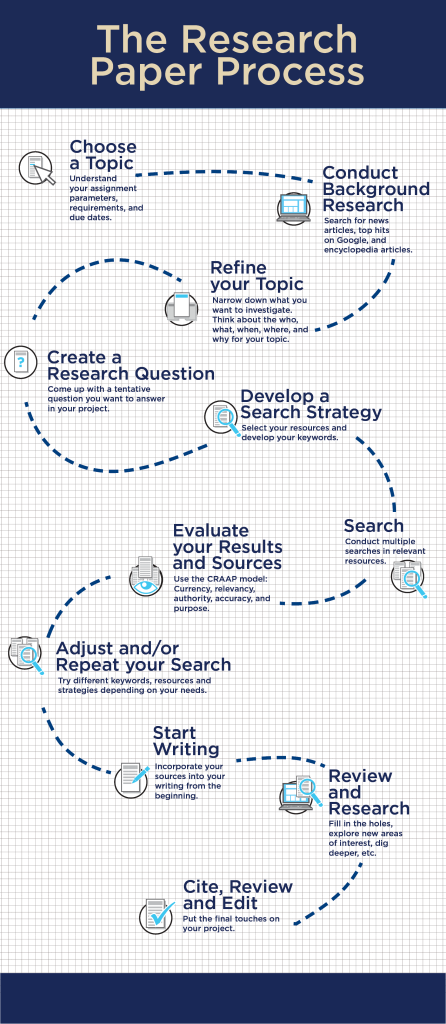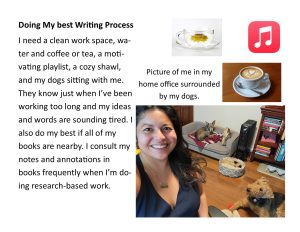Research & the Writing Process
Ch1 what is research
Stephanie Ojeda Ponce
Research & the Writing Process
What is Research Writing?
Research writing is a form of writing that provides information about a subject. Research is searching, gathering, and considering information about something. This broad term can include Googling something or reading and evaluating specialized information and data. The goals of research writing vary on the situation and the type of writing.
In the “Writing Cases” section of their website, Evergreen College’s Native Cases project explains the type of case studies they publish:
“The term “case studies” varies widely. Legal cases, for example, differ considerably from our definition of teaching cases. We define a teaching case as a “significant story of a real, often unresolved, issue that can trigger curiosity, debate and further research. “Effective cases involve controversy, conflicts or puzzling situations with enough tension to invite discussion and problem solving. Some of the different types of teaching cases in our collection are summarized below.”
In many student research writing situations, contributing to an unresolved issue or something about which there is ongoing discussion is seen as valuable.
Purdue University’s Online Writing Lab (OWL) describes Argument and Analytic research paper’s in their digital writing lab. The word paper is used to mean the same thing as essay (since they used to have to be physically done on paper!).
Some Common Types of Research:
- Academic Research: Research created by and for universities and colleges.
- Lab Research: Investigation or experimentation conducted in a laboratory. For example, chemists could research the interaction of different chemical compounds for medical use.
- Field Research: Investigation or experimentation conducted out in the world. For example, Noble Prize Winner Wangari Maathai did field research about planting trees to improve soil and water quality. The project grew and came to be known the Pan African Greenbelt movement.
- Secondary Research: This basically means reading and looking into what other people say about a topic. It involves searching through digital, print, audio, and visual sources online or in person. Much of the secondary research process will be done through college library databases.
- Primary Research: This is doing research on your own using an experiment, study, survey, or other type of research method.
- Archival Research: Searching through print or digital databases for archived documents about events or dialogue. This could involve research such as analyzing digitized newspapers about the 1918 flu pandemic or reviewing first editions of books.

Why is Research Conducted and by Whom?
Some people develop research ideas because they want to solve a problem. Others have ideas and find ways to research them. There are multiple approaches to sensemaking and research can be one of them.
- A company may ask an employee to research a new technology that might be implemented in the workplace.
- An advanced scholar may need to develop and publish research projects to continue to be a competitive applicant for grants or job opportunities.
- A consumer might want to research the algorithm and storage practices of the websites they use to understand the risks they expose themselves to online.
- A student may conduct secondary research to better understand a concept learned in class.

What Research Will I do in this Class?
Research writing classes for college students build on existing reading and writing skills, developing more specialized approaches for people to find and develop information on their own. This type of writing class provides opportunities for more independent development of topic and research methods. For this level of class (first 90 credits/units of college classes), most of the research will be secondary research. This means many of the activities are using the library (in person or online) and other resources to look up and read existing research. This is an important skill because the “higher up” in a field a person goes, the more they are expected to know and have opinions within the subject. You will also have opportunities to do some primary research, think critically about what the “rules” of research are at schools, and come up with meaningful ways of sharing your research. This text will provide a survey, or information about research in a broad way, of research writing with a focus on skills useful for writing in other college classes at various levels. Within the coursework, there will also be opportunities for students to do conduct and practice a variety of research methods for their own individualized goals.
Research writing involves multiple steps, and requires becoming conversant in a topic. This is not a skill that can be demonstrated with one finished piece or writing or a test. Research writing involves multiple steps that are collaborative – the steps involve other people and resources. For example, at many universities, the entire research writing class is taught by a writing teacher and a library teacher together because library research methods are such a large part of the writing process. Even when the class is not co-taught, library research and support are still important components. Another way research is collaborative is peer review. Published articles have to be read, evaluated, critiqued, edited and approved in order to be published. In academia, there is a lot of hidden and open judgment of writing style, content, and even formatting. Publishing writing is a competitive process with very few people getting paid, and a lot of jobs dependent on quantity, amount, and perception of the published writing. I share this as context so you know a little about what shapes this subject matter, influences what ends up published and available for you to read. Having some awareness of this can be helpful to keep in mind.
Succeeding in Writing
Some students are very excited to dig in to research and writing. Some students are scared of the research part, and others are scared by the writing part.
- There are many different genres (types) of writing with different patterns and rules common depending on the type. Instead of following general writing rules, notice the features of each specific type of writing.
- Writing classes build the steps into the assignments with short writing assignments, bibliography requirements, drafts, peer review and much more.
- Collaboration with the instructor, research librarians, classmates/other writers, and writing tutors are essential to success.
- A lot of work goes into producing a little bit of writing. The work involves a lot of reading, note taking, and thinking. Don’t forget to do a lot of thinking about the information and ideas as part of the writing class.
- Writing, including research writing, is a long-term multi-step process. Small steps will lead us to the big steps and the whole finished product. Sometimes, steps need to be revisited.
The Writing Process
The most common way people approach writing is – just do it. Some people have a lot of anxiety and fear they move through on their way to just doing the writing, but few people actually go through the steps of the writing process. This works okay for short everyday writing needs like a text message. When the writing task is longer, more-complex, or related to some important evaluation, following the steps of the writing process is more important. The assignments for the majority of college writing classes are steps of the writing process. You write and get input at multiple steps. For example, student and professional researchers write proposals that have a basic thesis and capture some of the early research in order to get input or approval before moving forward with more in-depth work.

Capture Your Own Writing Process
What is your personal process when you have to write something that requires thought? You might be responding to a boss’ email, writing an application, or responding to the text of a romantic interest. Either way, there are some individual steps you take that help you with your writing process.
- Think about the type of writing you will do for this class. You’ll do short writing that communicates your ideas or ideas & evidence related to the topic. You’ll move through multiple short reading, research, and writing tasks to produce a long research essay. The typical writing process steps are the main content of the class.
- Think about the way you typically write. Are there responsibilities you need to deal with? Do you need to put earplugs in because it’s noisy where you’ll be doing work? Do you put your favorite earbuds in and put on a favorite playlist because noise helps you concentrate? How are you sitting? What beverages do you need?
- Draw or write a Doing my Best Writing Process. Instead of capturing the steps for the quarter, capture the steps you would take to do your best research and writing for the activities and assignments in this class.
Example: Stephanie’s Best Writing Process


